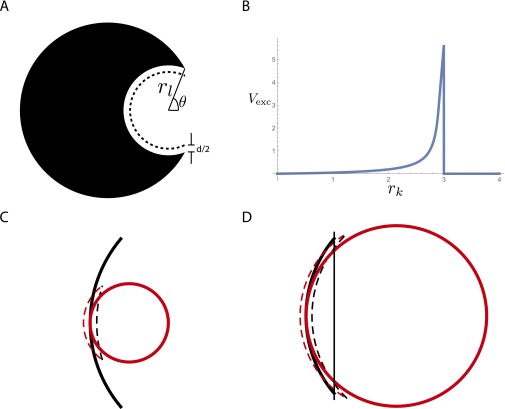Fig. S5.
(A) Model lock, with a spherical cavity of radius rl cut off at angle θ. When a key is not bound, depletant particles are excluded from the volume between the lock and the dashed line. This excluded volume, originally , can be decreased via key binding inside the cavity. (B) Full calculation for the change in excluded volume Vexc as a function of . The maximal change, and therefore the most energetically favorable radius for binding, occurs when . Here and . (C) When , the excluded volume is just given by the contact area of the two spheres. Black, lock; red, key. Dashed lines indicate the respective excluded volumes when the lock and key are separated. (D) When approaches , the intersection with the plane must be taken into account. Black, lock; red, key. The vertical line indicates the plane through the opening of the lock. Dashed lines indicate the respective excluded volumes when the lock and key are separated.

